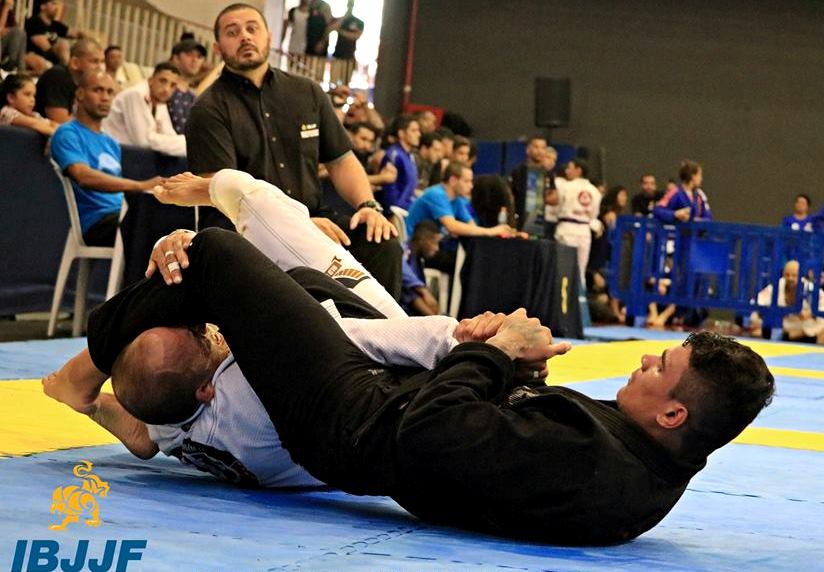Brazilian Nationals champion Rudson Mateus, 23, is known amongst fans and commentators for a strong game of closed guard — a position which, honed since his time as a blue-belt, has become his favorite trap.
In the black belt alone — since 2017 — the young athlete of Caio Terra Association (CTA) has 21 submissions out of 32 wins, according to BJJ Heroes. Rudson has used the armbar from the closed guard six times in the period.
But what makes Rudson’s guard so powerful? A little background helps answer that. As a kid, the Amazonas native became used to swimming against the current in the dams and rivers of Manacapuru, his birthplace. This habit, he believes, helped him develop a lot of strength, and swimming is his favorite pastime to this day when he’s away from the dojo. And what made him develop his technique? Why, repetition, of course.
“Since the orange belt, I’ve been practicing the armbar a lot, never stopping returning to it,” he says. “With that I understood deeply the concept of the position, the grips and the hip movement. From any position, I can visualize the armbar. And I never stop repeating the position in training, from the closed guard even.
“The armbar is a position that requires a good adjustment; it’s not just thinking that you must hip-escape and throw your legs over the opponent. I think, for that reason, many people waste the move in the developing belts. What people get wrong the most, the way I see it, is in locking the opponent’s arm in place. That’s one of the most important factors of the armbar.”
To Rudson Mateus, another classic error happens when the fighter tries to pass their leg over to finally tighten the move. “I see people have the habit of crossing their legs,” he says. “When you cross the leg, you end up not applying the pressure where you should — that is, on the rib and the nape of your opponent’s neck.”
All done — you can now start perfecting your armbar. First, work on trapping your opponent’s arm. If you’re already good at doing that, check whether your legs are producing the right amount of pressure. Now it’s all about focusing on details.
“Pay attention to the smallest things, like the grip adjustments, the hip escape and, mainly, your leg positioning,” Rudson says. “For example: never close the guard with your legs low — keep them firm at the same height as your opponent’s hip.” To improve your hip work, he suggests: “Always exercise to make your hip strong. Invest in the hip escape as warm-up; it’s a great start.”
In case your armbar is a bit limp even after these measures, Rudson has a mindset tip. “When you think ahead, you act first, and that’s good. Never refrain from attempting a position for fear of screwing up. I never think I’m gonna get my flying armbar wrong, for example. With confidence in my training, I always try.”
The post Why doesn’t your armbar work? Rudson Mateus may have the answer first appeared on Graciemag.
